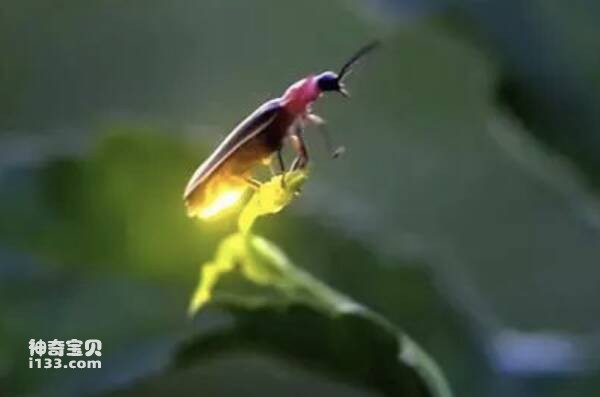When you see fireflies dazzling in front of your eyes like small lanterns in the woods, grassland, garden or beside a stream on a summer night, you will definitely shout with joy, "Ah! Fireflies!" "
How do fireflies glow? What is the purpose of glowing? These are questions that young friends are interested in.

The light-emitting organ of the firefly grows between the sixth and seventh segments of the abdomen. From the outside, it is just a silver-gray transparent film. If you peel off this film and observe it under a magnifying glass, you can see thousands of them. The luminescent cells are followed by a reflective layer, surrounded by small tracheae and densely packed slender nerve branches. The main substances in luminescent cells are luciferin and luciferase. When fireflies start to move, their breathing speeds up, and a large amount of oxygen is absorbed into the body. The oxygen enters the luminescent cells through the small trachea. When luciferin interacts with the luciferase that acts as a catalyst in the cell, the luciferin will be activated and produce a biological oxidation reaction. , causing the underbelly of the firefly to emit a bright green light. And due to the different breathing rhythms of fireflies, a "flash signal" that is sometimes bright and sometimes dark is formed. After research, people have formulated a simple formula for its luminous process:

The luciferin in fireflies is not inexhaustible, so where does the energy come from when they continue to emit light many times?
It turns out that energy comes from adenosine triphosphate (ATP for short), which is the substance that supplies energy in all living things. With this kind of energy in the firefly's body, it can not only shine continuously, but also be brighter. Only the light-emitting structure cannot emit light, and it must be regulated and controlled by the brain nervous system. If you do an experiment and cut off the head of the firefly, the light-emitting mechanism will lose its function.
Fireflies emit light with very high efficiency, converting almost all chemical energy into visible light, which is several to dozens of times more efficient than modern electric light sources. Because the light source comes from chemicals in the body, the light emitted by fireflies is bright but has no heat. People call this light "cold light." Since the light of fireflies does not contain radiant heat, physicists believe that it is a very ideal light, because when ordinary things emit light, they also generate heat at the same time, such as a lit candle. Another example is when the light bulb is turned on and the bulb becomes too hot. However, people do not need lights to generate heat. It would be ideal if we could create light that does not generate heat like fireflies. More than thirty years ago, people simulated the principle of fireflies to create fluorescent lamps (fluorescent lamps), which basically met this requirement.
animal tags: firefly
We created this article in conjunction with AI technology, then made sure it was fact-checked and edited by a Animals Top editor.